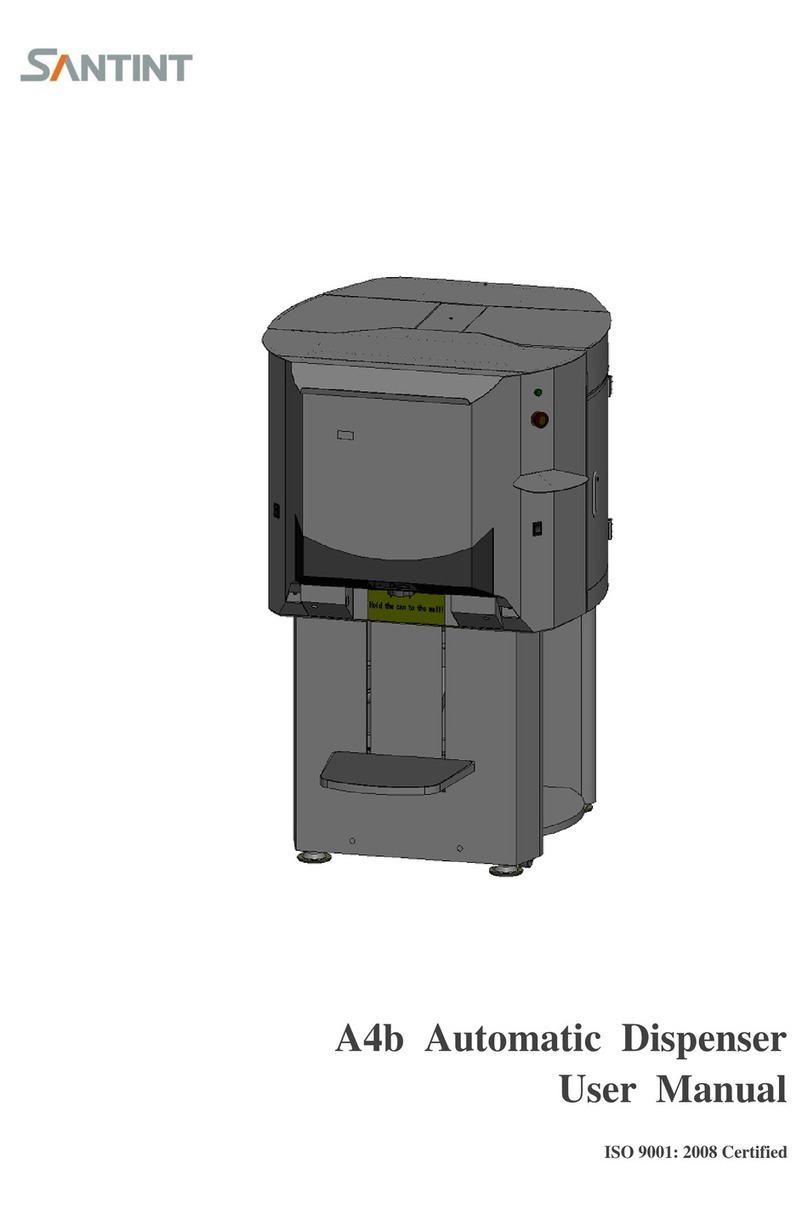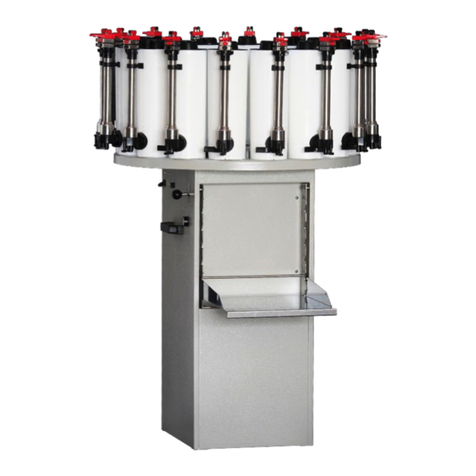
- 9 -
oMove the turntable to the left and right slightly to let the
brake handle return to its original position.
oThe turntable is now locked.
2. Shaking
Switch the mains switch to the “ON” position. The shaker will
automatically initialize and the LCD will display “Initializing”. After
initializing is finished, the LCD will display “Ready”.
Open the shaker door and place the paint can on the center of the
loading platform on a standard can cushion and close the door (see
Figure 7.2).
Select the desired time by pressing the button(s). The clamping
plate will automatically clamp down on the paint can as the LCD will
display “Clamping”. Once the clamping is finished, the shaker
will start shaking and the LCD will display “Shaking” and the
time countdown.
The shaker will stop once the countdown reaches 0 and
the LCD will display “Wait, Please”. The clamping plate will
automatically release the paint can.
Open the door and remove the paint can. When
the LCD displays “Ready”, it is ready for the next shaking.
Please clean off any paint spills
on the clamping plate, loading plate and the two
guide screw shafts every day.
Warning:
A. The shaking without any load or overload is prohibited.
B. During shaking, press Emergency Stop down
immediately in case of any abnormal noises.
C. Press Emergency Stop down immediately in case the
shaker has trouble or is locked up during the initializing
or clamping. Reinitialize the shaker.
D. Unplug before cleaning the shaker.
8.0 Dispensing
The minimum shot of the dispenser is one division on the Fine gauge’s dispensing unit is
marked at the bottom. For example, 2957/384 means the unit is 1/384 US Fl. Oz.
Numbers on the Rough gauge and the Fine gauge have same unit marked at the bottom of
the Rough gauge. For example, if the Rough gauge is marked 2957/48, the number “30”
on the Rough gauge represents the dispensing value of “30x29.57/48ml.”, and number “2”
on the Fine gauge represents the dispensing value of “2x29.57/48ml.”































